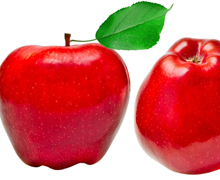
If cravings for unhealthy food options are undermining your efforts to eat better then knowing what researchers in Scotland discovered may help you win that battle. Psychologists from the University of Aberdeen found a food’s readiness-to-eat was a key factor in appeal when it came to cravings.
Armed with that knowledge, you might be able to make healthier options more appealing and thus avoid poor choices.
Researchers wanted to know how readiness-to-eat affected food cravings and published their findings in the journal Food Quality and Preference. They concluded instantly edible food was 15 percent more appealing than food that needed any sort of preparation, even the slightest, such as cooking, peeling or unwrapping.
This was true for meats, fruits, vegetables, chocolates and snacks. For example, a peeled orange generated more cravings than an unpeeled one and an open bag made chips was more desirable than those in a closed bag.
Researchers Dr. Constanze Hesse and Dr. Helen Knight worked with a group of 200 volunteers. They showed them images of food in different stages of readiness to eat and measured how much they were craved. For example, a chopped pineapple was compared to a whole, unpeeled one and raw salmon was compared to cooked salmon.
"There is plenty of research that has shown that higher-calorie foods are linked to higher cravings, so that is already well established," said Dr. Hesse. "The interesting thing we found is that food cravings are much higher for instantly edible foods compared to foods that needed to be cooked, chopped or peeled, or even unwrapped."
Dr. Hesse said they discovered the effect was amplified based on hunger. Those who were hungrier found the instantly edible food even more appealing.
"The biggest difference was for raw compared to cooked foods, followed by unpeeled or packaged compared to peeled or unpackaged food, and finally for chopped and unchopped foods," she said.
She said this research should be applied to campaigns designed to promote healthy eating.
"Calorie-dense food is often marketed in a prepared and ready-to-eat way, just think about adverts for burgers or pizza," she said. "In contrast to this, low-calorie food is often shown unprepared, for example raw salmon or heads of broccoli which need effort and further preparation to make them ready to eat. It would be more effective if public health services used pictures of ready-to-eat healthy food on their adverts as we now know that this makes it more appealing and more likely to encourage healthy food choices."
Dr. Knight added, "As well as obvious benefits for health promotion campaigns—it is also really important for all of us to know that readiness-to-eat affects how much we crave certain foods. So if you are starting this year trying to eat better, be sure to prepare healthy food to encourage healthy choices and avoid going food shopping when you're hungry as this can make you crave more ready-to-eat snacks which are typically not as healthy as home-cooked food."
Click here to read more in the journal Food Quality and Preference.
